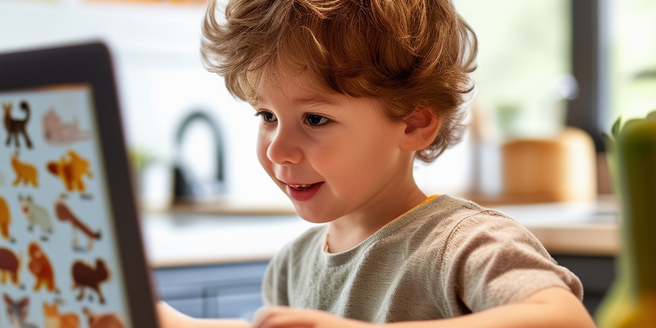
Introduction to Animal Recognition Games
Animal recognition games are interactive applications designed to help users, particularly children, identify and learn about different animals. These games use engaging visuals and sounds to capture the interest of young learners, making education both fun and effective. By presenting animals in various ways, such as through pictures, videos, and sounds, these games enrich a child’s learning experience. This method promotes better retention and understanding of information. With a wide variety of animals to discover, children are continually challenged to expand their knowledge. Whether used at home or in educational settings, animal recognition games are valuable tools for early childhood development.
Benefits of Animal Recognition Games for Kids
Animal recognition games offer numerous benefits for children. Firstly, they enhance cognitive skills by requiring kids to recognize and remember different animals. Secondly, these games improve fine motor skills as children interact with the game interface. Thirdly, they introduce kids to new vocabulary and concepts about the animal kingdom, broadening their knowledge base. Moreover, the interactive nature of these games keeps children engaged and motivated to learn. Playing these games can also boost a child’s confidence as they master new information. Overall, animal recognition games are a fun and educational way to support a child’s growth.
Popular Animal Recognition Game Apps
With a variety of animal recognition game apps available, choosing the right one can be overwhelming. Popular options include “Animal Kingdom,” which offers realistic animal sounds; “Kids Zoo Game,” featuring vibrant illustrations; and “Animal Puzzles,” aimed at improving problem-solving skills. These apps are designed to be engaging and educational at the same time. Another favorite is “Animal Snap,” a card-matching game that enhances memory and recognition. These apps are available on multiple platforms, making them accessible for mobile and tablet users. Each app provides unique features catering to different learning styles, ensuring that children remain entertained while gaining valuable knowledge about animals.
How to Create Your Own Animal Recognition Game
Creating your own animal recognition game can be a rewarding project. Start by deciding the age group for your game to tailor the content accordingly. Gather high-quality images and sounds of various animals from reliable sources. Use a user-friendly platform or software to design your game interface, ensuring it is intuitive for young users. Incorporate different levels of difficulty to challenge children as they progress. Additionally, test your game with a small audience to gather feedback and make improvements. With creativity and careful planning, you can create an engaging and educational animal recognition game.
Tips for Making Animal Recognition Games Fun
Making animal recognition games enjoyable requires creativity and attention to detail. Start by incorporating vibrant visuals and realistic animal sounds to captivate children’s interest. Adding fun facts about the animals can enhance their learning experience. Use rewards and levels to encourage progress and keep kids motivated. Incorporate storytelling elements to make learning more engaging. Make sure to include various types of activities, such as matching games, quizzes, and puzzles, to cater to different learning styles. Allow for multiplayer options to promote social interaction and learning. By keeping these tips in mind, you can create an animal recognition game that is both fun and educational.
Future Trends in Animal Recognition Technology
The future of animal recognition technology promises exciting advancements. Artificial intelligence and machine learning are driving innovations, making these games more intuitive and responsive. Future games will likely feature augmented reality (AR) to provide immersive learning experiences. With the integration of advanced image and sound recognition, games will become more accurate and educational. Furthermore, these tools have the potential to revolutionize traditional learning methods. Additionally, personalized learning experiences will become more prevalent, adapting to the individual needs of each child. As technology continues to evolve, animal recognition games will become even more effective tools for education and development.
